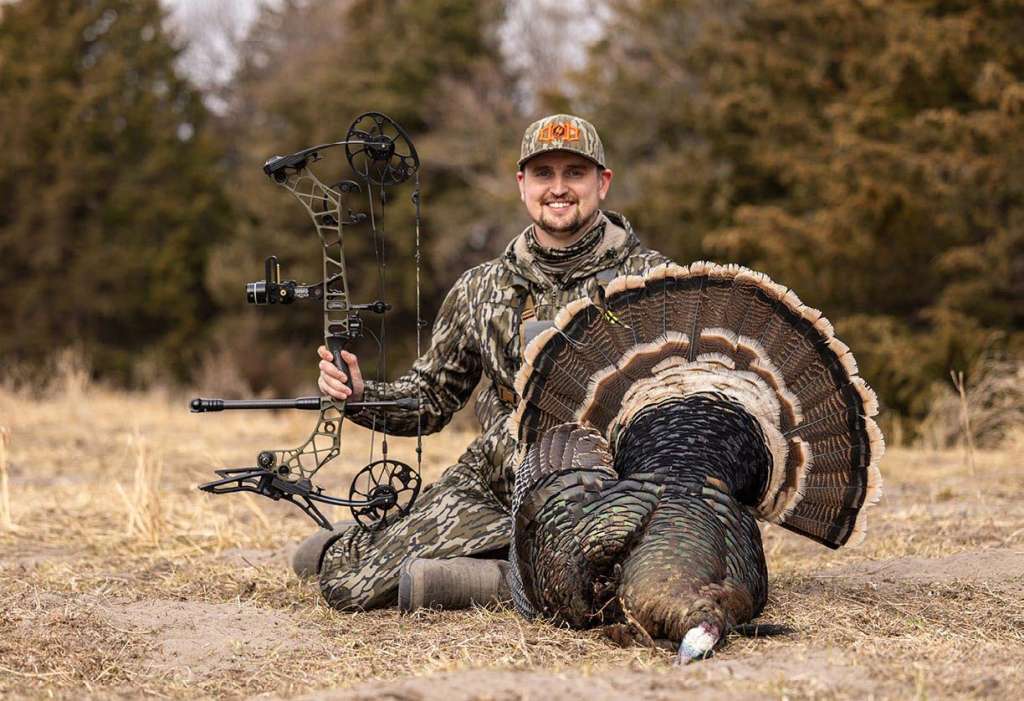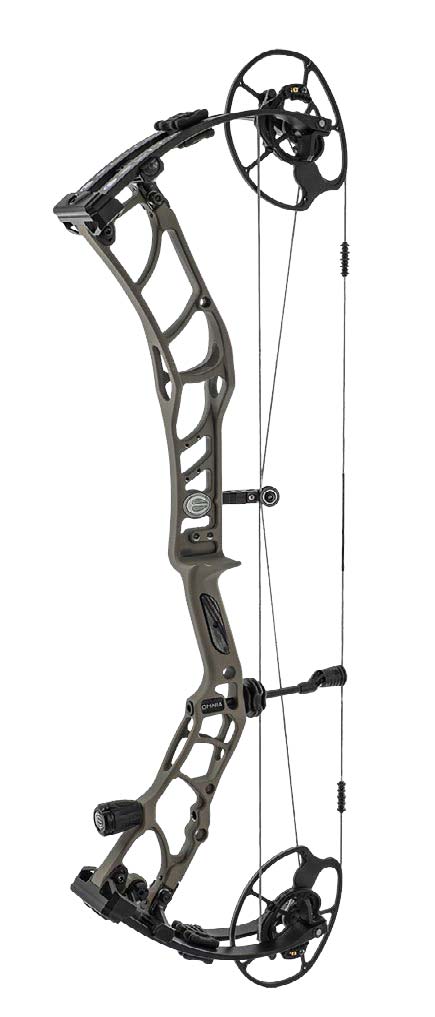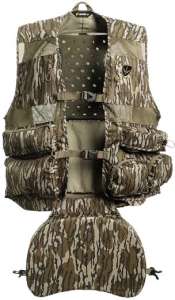Whether you’re a veteran turkey hunter or someone who is ready to experience the thrill of that hunt for the first time, calling and harvesting a spring gobbler at close range is always challenging. As if spring turkey hunting isn’t already a feat, many hunters add to the challenge by trading in the traditional shotgun for a bow and arrow. The difficulty of getting a wild turkey into archery range, drawing the bow and making a successful shot—without the keen eyes of a turkey spotting the hunter— is an entirely higher level of difficulty. The added effort that archery brings to turkey hunting results in either enjoyment for the hunter or extreme frustration.
When asking “Respect The Game” TV host and Elite Archery’s Larry McCoy what it takes for a hunter to successfully harvest a gobbler with a bow, he laughs and answers, “Patience.” McCoy has been turkey hunting for 27 years, and for 21 of them, has been using a compound bow as his weapon of choice for spring turkeys. “I have learned a lot over the years by messing up when hunting,” explains McCoy, saying that one of the most common mistakes bowhunters make is rushing the shot. When turkeys get into close range, it becomes imperative that a hunter stay motionless until the bird is in position and remain undetected while preparing for the shot. Otherwise, your hunt may come to a quick halt with nothing to show.
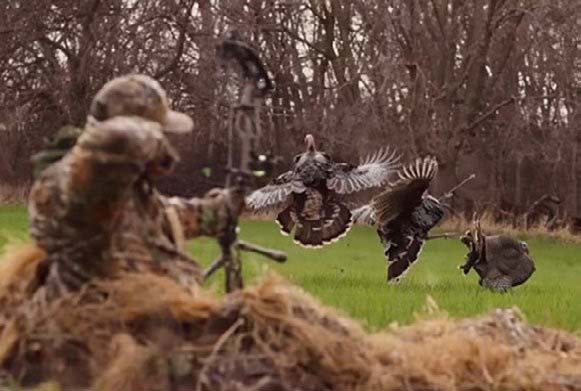
Iowa turkey hunter and Drury Outdoors pro Josh Sparks has also experienced many challenging hunts when trying to call turkeys into close range while bowhunting. For the past few years, Sparks and a few of his friends have traveled to Nebraska during the early spring season to hunt large flocks of Merriam’s turkeys with their bows in hand. Sparks tells how their experiences have either gone very well or have left him and his friends disgusted because of close calls and mishaps.
Both turkey hunting pros admit that the challenges can weigh heavy on a hunter’s mind, yet if the proper adjustments are made, the rewards can reap success, and the thrill of accomplishment is second to none.
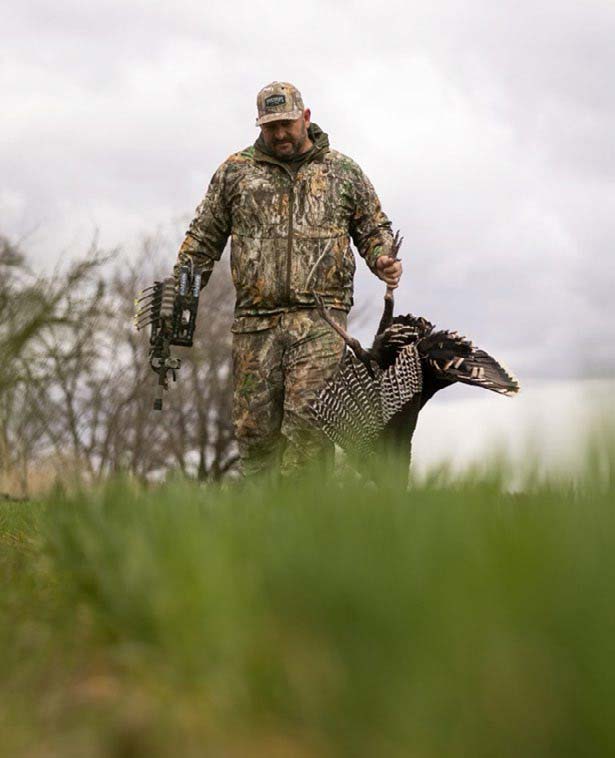
Use Shadows
When many hunters consider coming within archery range of a mature gobbler, they often picture a ground blind as a vital piece to achieve success. Veteran bow hunter McCoy agrees that using a blind can be beneficial in keeping a bowhunter concealed from turkeys. However, he says that using a blind is not necessary for bow hunters on every hunt.
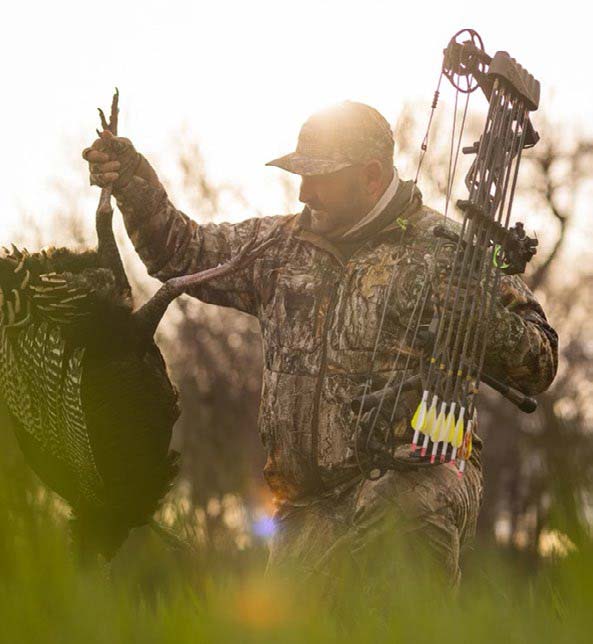
“Honestly, most of my birds I have taken with a bow have been outside of a blind,” McCoy says. He credits this success with being a more mobile hunter by using shadows, structures and the natural elements to get into the proper position, rather than waiting for turkeys to come to him. McCoy explains that when walking or moving to get close to a bird, or when trying to set up in a location where the gobbler is more likely to come closer, hunters should stay on the shady sides of hills. He says they should also use darker shadow areas to aid in drawing the bow when a gobbler presents the right shot.
The 2023 Elite Omnia can reach speeds up to 347 feet per second and brings bowhunters unachievable shooting. Its statistics are:
- 32-inch axle-to-axle
- 6-inch brace height
- 5-pound weight
- 5 to 30-inch draw length
- 40-, 50-, 60-, 65- and 70-pound peak weights
- Up to 90% let-off
- 347 FPS
Jake/Gobbler Decoys
One of the most common steps to help achieve a successful harvest on a mature gobbler is using decoys to keep their attention while making the shot.
When Drury Outdoors pro Josh Sparks has hunted in Nebraska the past few seasons, he says he has often been tasked with breaking gobblers away from the huge flocks in which these early-season turkeys are still traveling.
“When a gobbler is a flock of 50 or more birds, it is hard to give them a reason that they should leave the flock and come to my calling,” says Sparks. He explains that he keeps his calling efforts to a minimum when hunting larger groups of turkeys, relying instead on his decoys to do the work.
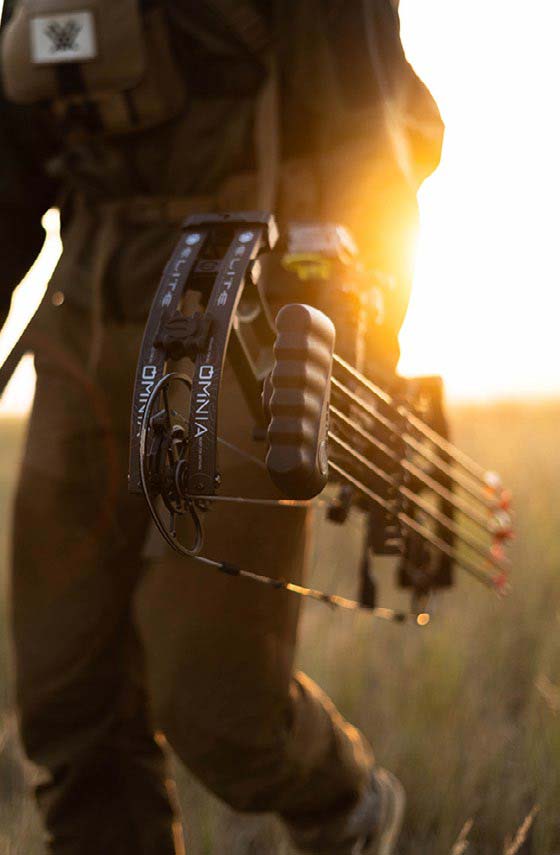
“When using decoys in areas where I know there are a lot of other turkeys, I use a quarter-strut jake decoy, a laydown hen, and an upright hen as my primary decoy set,” he says. Sparks credits the jake decoy as the reason a mature gobbler may break away from the flock and come closer to investigate. Sparks recalls that on multiple hunting occasions, he’s had a real jake come to his decoy setup out of curiosity. The natural inquisitiveness of other jakes creates jealousy, and mature toms to want to run the immature jakes away from any hens.

McCoy often uses his decoys as an attraction and a distraction, stating that hunters should always have something between them and the turkey when calling them into close range. “If a gobbler responds aggressively toward the decoys, I like using a full-strut decoy because it places something between the turkey and myself, allowing time to draw my bow without being spotted.”
- Use less poundage when bowhunting turkeys.
- Crank the bow down a bit.
- I like to use mechanical broadheads. If the arrow does not pass entirely through, that isn’t bad; that means quicker recovery rates and a turkey over your shoulder on the way out.
Properly Using Ground Blinds
It is no secret that a portable ground blind is one of the most effective methods to remain concealed when bowhunting turkeys. McCoy has used ground blinds to aid in getting archery close to gobblers on multiple occasions.
This past season, McCoy set the bar on challenging hunts even higher when he successfully used a waterfowl-style blind in a wide-open Kansas wheat field while harvesting a mature gobbler with his bow. Even though McCoy loves the thrill of a challenging archery hunt, he suggests that hunters set up a blind before the hunt. McCoy says hunters need to consider factors such as from what direction turkeys are most likely to approach the blind and where the sunlight will be shining.

“When setting a blind up before hunting, a hunter should position the blind so that the sun remains on the back of the blind at all times,” says McCoy. He adds that having the sun at your back creates a darker interior, which keeps the hunter more concealed when drawing a bow.
To carry all the gear needed, as well as his bow and blind, a turkey vest (such as the Blocker Outdoors Finisher Pro II Turkey Vest) is vital. If the hunter doesn’t have time to set up a blind early or prefers taking a blind with them, Sparks recommends wearing a turkey vest and a blind bag to help carry these items to where the turkeys are located. Sparks uses at least two to three decoys and his calls on every hunt.
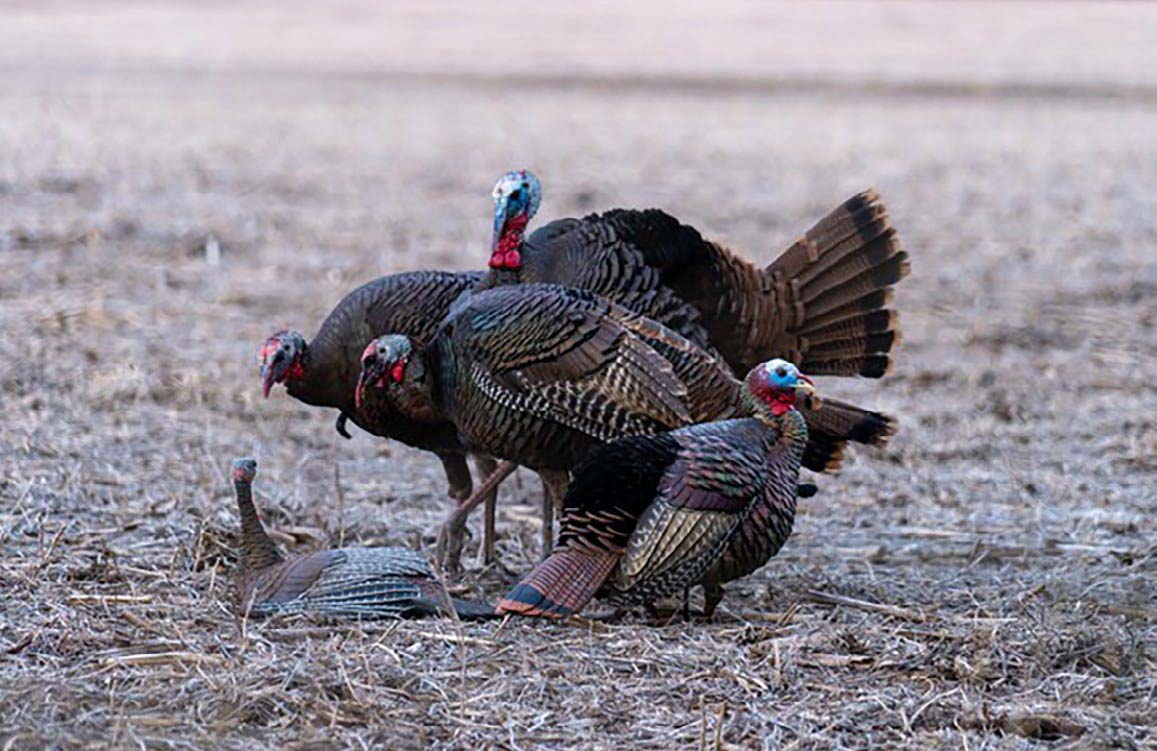
On a recent hunt in Nebraska, he recalls the weather being less than ideal. Given high winds, he and his hunting partner decided to travel to a lower valley where most of the turkeys had moved. The lower elevation helped them escape the harsh conditions and allowed turkeys to hear their calling. To get to where they needed to go, a turkey vest and a lightweight ground blind served the purpose. And it gave Sparks and his friend the opportunity to harvest two mature Nebraska toms.
Harvesting a mature gobbler during the spring with a bow and arrow is one of the most prestigious accomplishments for any bowhunter. For archers to harvest a tom each year requires hard work and a skill set only achieved by trial and error while hunting. Pros McCoy and Sparks have been successful throughout their turkey hunting careers by gaining knowledge from past hunts, always practicing to sharpen their skills and staying persistent each year.
Blocker Outdoors Finisher Series Pro II Turkey Vest
Whether sitting at a tree base or on a run-and-gun turkey hunt, the Finisher Pro II Turkey Vest has you covered. Carry all the gear you need and sit comfortably when waiting for that big mature gobbler to strut into range. Its features include:
- Pockets for all sizes and shapes of calls and accessories
- Rear game bag to carry decoys or a trophy gobbler after the hunt
- Detachable seat cushion
- Blaze orange safety flag
Per our affiliate disclosure, we may earn revenue from the products available on this page. To learn more about how we test gear, click here.





